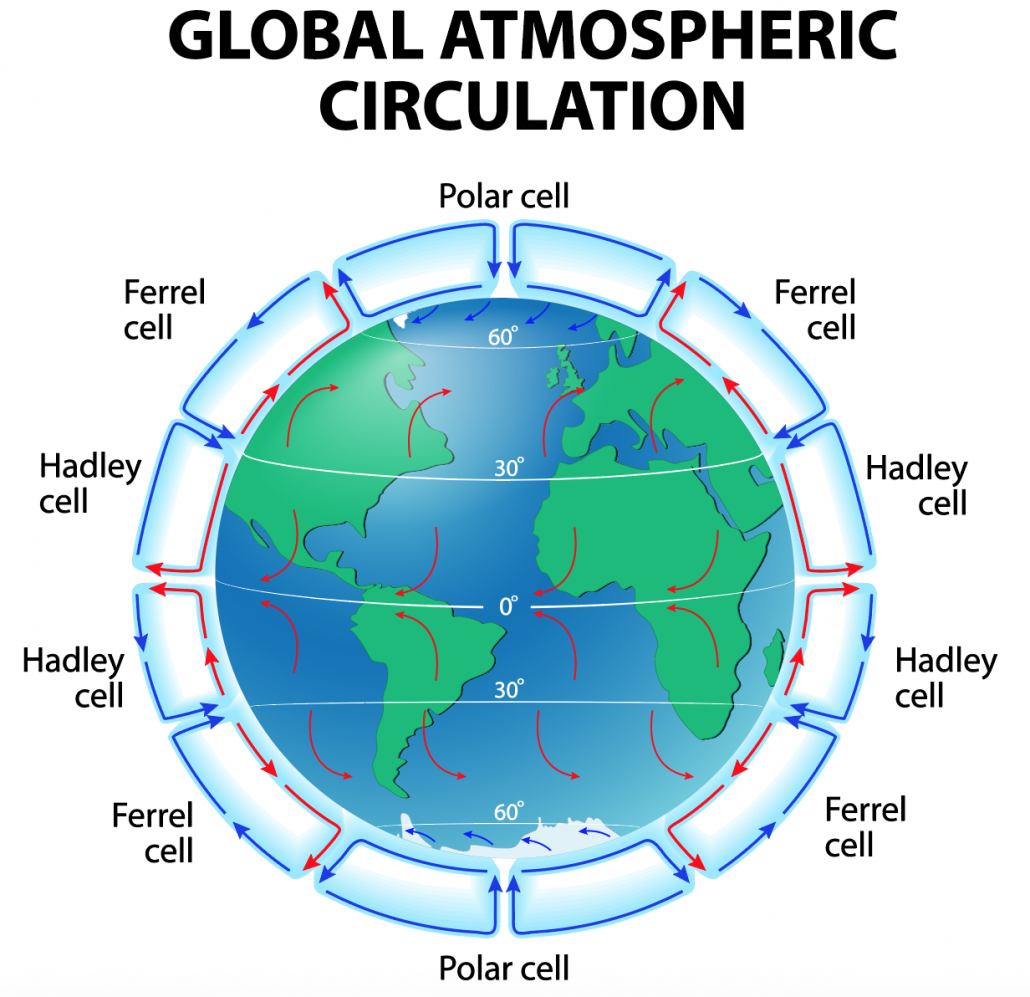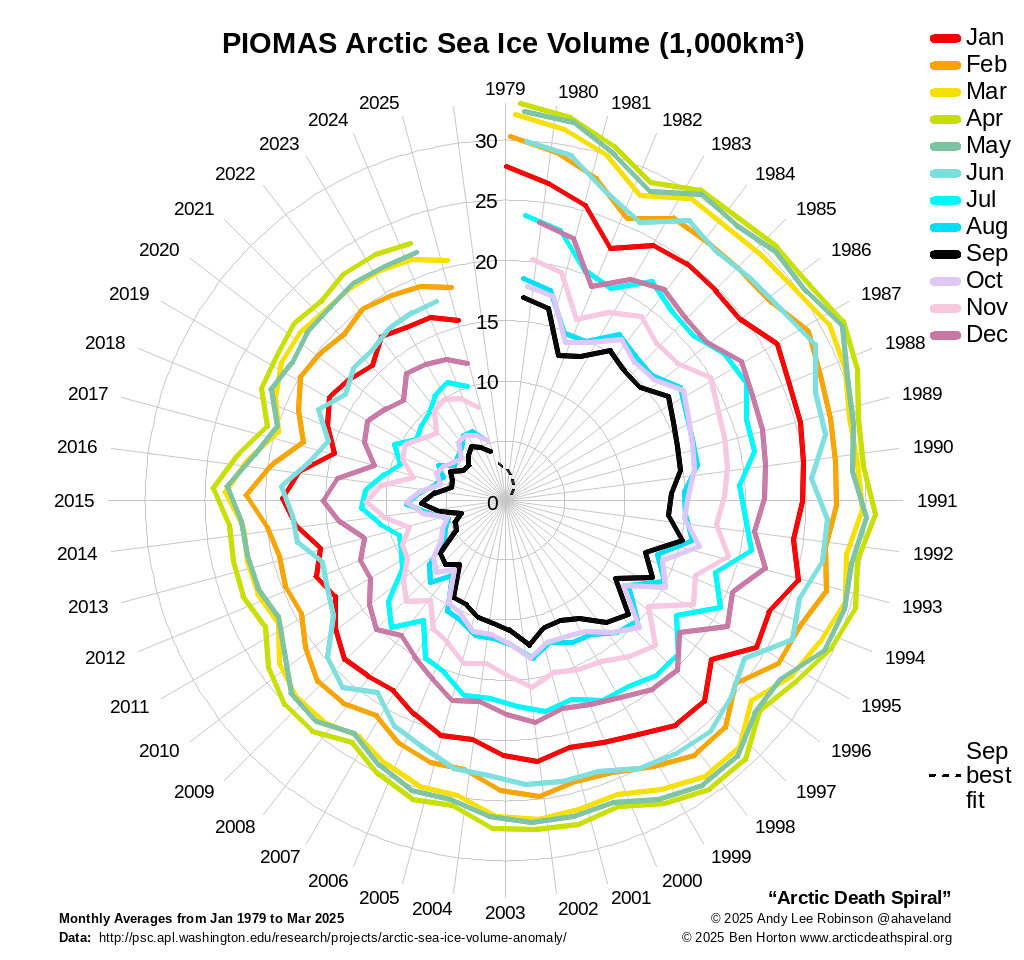A Climate Hypothesis
May. 14th, 2022 10:20 pm I find myself in the rather odd situation of having come up with a detailed and, I think, unique hypothesis about where the current round of climate change is headed. As far as I know it works in terms of physical laws, and the global climate seems to be shifting in the direction I'm anticipating, but as far as I know I don't have any readers who are climatologists and thus can check my work -- and the academic scene isn't exactly enthusiastic about outsiders proposing theories.
I find myself in the rather odd situation of having come up with a detailed and, I think, unique hypothesis about where the current round of climate change is headed. As far as I know it works in terms of physical laws, and the global climate seems to be shifting in the direction I'm anticipating, but as far as I know I don't have any readers who are climatologists and thus can check my work -- and the academic scene isn't exactly enthusiastic about outsiders proposing theories. Here's the hypothesis. Right now the climate of each hemisphere of the earth is dominated by three circulations of air -- cells, in climatological jargon. The whole shebang is driven by the temperature difference between the tropics and the poles. The tropics get all that sunlight pouring straight down from above, so heated air tends to rise along the equator (more exactly, the ITCZ or intertropical convergence zone, but we can be schematic for the moment). That produces the Hadley cells shown on the left: warm air rises to the edge of the stratosphere, flows poleward at high levels, then sinks back down around 30° of latitude. It's bone dry by then, which is why there's a band of desert around the globe near 30° north and south. Then the air gets drawn back toward the equator, sucks up heat and moisture, releases the water as it rises, and the cycle continues.
You get a similar process at the poles, but here it's driven mostly by the intense cold at the poles themselves. That causes air to sink, and sets the polar cells in motion. That's why the arctic and antarctic regions are quite literally deserts -- the air that sinks and then flows out from the poles is bone dry as well as very cold, forming the bleak arctic and antarctic easterlies.
Between them is a third set of cells, the Ferrel cells, which are weak and unstable. Some air that's sucked upwards around 60° nortth and south latitude goes toward the equator rather than back to the poles, some air that comes rushing down around 30° latitude flows toward the poles instead of back to the equator, and the instabilities give the temperate zones the unstable weather we all know so well.
 Got it? Now factor in greenhouse gases. Those, in effect, increase the insulating value of the atmosphere and thus make the transfer of heat from the tropics to the poles more efficient. The increasing heat in the arctic region melts the sea ice: on the right is a useful chart of the decline in ice cover.
Got it? Now factor in greenhouse gases. Those, in effect, increase the insulating value of the atmosphere and thus make the transfer of heat from the tropics to the poles more efficient. The increasing heat in the arctic region melts the sea ice: on the right is a useful chart of the decline in ice cover. Ice reflects sunlight -- in technical language, it has a high albedo. That means that most of the heat that falls on the Arctic Ocean gets bounced straight back into space to warm the cockles of alien species on worlds orbiting the circumpolar stars. Open water has a much lower albedo -- when sunlight falls on it, the water soaks up heat. Water's really good as a heat sink, so it takes a lot of sunlight on open water to warm the sea -- but the Arctic Ocean's got a secret weapon. All summer, the sun stays above the horizon 24 hours a day. So as the ice goes away, the Arctic Ocean warms...
...and once it passes a certain threshold, which I don't have the math skills to calculate, the Arctic Ocean becomes warmer than the land areas immediately around it. That's especially true in winter, when balmy regions such as Siberia and Greenland would be a lot colder than an unfrozen Arctic Ocean.
That, in turn, would cause the collapse of the polar cell. Remember that what keeps those dry frigid easterlies blowing in the arctic is the intense cold of the polar regions. Once the Arctic Ocean is ice free, it's warmer than its surrounding area, and so you don't get cold air dropping down from the upper edge of the troposphere -- you get temperate, moist air sucked into the polar area, where it rises, dumping heat and precipitation as it goes.
The most likely result, based on everything I know about thermal circulation, is that northern edge of the Ferrel cell in the northern hemisphere shifts north so that the rising zone now at 60° north is around the north pole, the northern edge of the Hadley cell in the northern hemisphere moves northwards accordingly to around 45° north...
...and climate belts shift spectacularly. The red line above is 45 degrees north, halfway between the equator and the north pole. If my hypothesis is correct, this will be the new location of the global belt of deserts in the northern hemisphere, because that's where the dry air from the upper troposphere spilling out from the ITCZ will come rushing down, the way it now does over the Sahara desert and similarly verdant regions. Well south of that line, you'll have savanna, and well north of that -- say, in what's now Alaska and Siberia -- you'll have the kind of temperate climate we now get around 45° north.
There are a couple of points worth noting here. First, 10,000 years ago this is pretty much what the climate of the northern hemisphere seems to have looked like. At that time the Sahara was a vast stretch of savanna, watered by annual monsoons off the Indian Ocean and inhabited by elephants, lions, and human beings. Back a hundred millennia or so, in the Eemian period between the last ice age and the one before it, the same seems to have been true also -- at that time there were hippopotami basking on the banks of the Rhine and the Thames. (Their fossils have been found.)
Second, there's some reason to think the collapse of the north polar cell and the northward shift of the Hadley and Ferrel cells may be happening already. Here's an article from Nature talking about the baffling northward shift of the tropical zone; here's an article from Journal of Geophysical Research arguing that a partial collapse of the northern polar cell actually took place in the 1980s. This is just what I found with a fast internet search; I'm sure someone with the necessary background could find much more relating to this suggestion.
Third, the change may not be gradual. The atmosphere, like many complex systems, tends to shift suddenly from one relatively stable condition to another. Paleoclimatic evidence suggests that changes in climate belts and temperature patterns in the prehistoric past took place very quickly in at least some cases -- we're talking here a matter of a few decades at most. Climate is strongly affected by mountain ranges and the distribution of land and sea, of course, which is why there isn't a nice even belt of desert around the world at 30° north and south, but the rapid desertification of the American west and some of the other climate changes currently under way may turn out to be harbingers of future climates for which most people, and most governments, are hopelessly unprepared.
(no subject)
Date: 2022-05-15 05:04 am (UTC)Land heats up faster than water, and also cools faster. Water, maintains a much more stable temperature both diurnally and annually. The origin of the sea breeze, for example, is because the land heats up quickly while the sun is shining on it; it becomes warmer than the sea during the daytime, causing the air over it to rise and sucking in air (i.e. wind) from the relatively cooler sea. After the sun goes down, the land cools quickly, and when it becomes cooler than the sea, the wind reverses and blows out to sea. Similarly, high pressure areas (where air is descending and then blowing outward when it hits the ground) tend to develop over continents in the winter, because the land is relatively cooler than the oceans. The opposite happens in the summer, when relatively warmer temperatures on land cause low pressure systems to develop over the continents.
I don't really know enough to be able to say what will happen as arctic sea ice diminishes. Presumably there is an interplay between the albedo of the land (also covered with snow for part of the year) and that of the sea. As mentioned, the arctic ocean also has some heat exchange with more southerly bodies of water. As for what happens in temperate climates, though, it is as I described above: bodies of air descending over the land in the winter, and the reverse situation in the summer. Just a guess, but since the arctic ocean is surrounded by land, I would say that the polar cell circulation might be reinforced by a ring of warm land around a relatively cooler ocean during the arctic summer; and a possible tendency to reverse in an ice-free arctic ocean during the winter.
(no subject)
Date: 2022-05-15 05:48 pm (UTC)(no subject)
Date: 2022-05-15 09:30 pm (UTC)If we view the weather as a system for transferring heat from the tropics to the polar regions, we have heat input (insolation) and output (black body radiation). The amount of heat that is radiated out into space is dependent on the temperature at the surface of the earth (and at various levels of the atmosphere, but that gets really complicated). So there is more heat lost in the warmer tropics than at the cooler poles. However, the entire surface of the earth is in a fairly narrow temperature band somewhere around 200-300 degrees Kelvin; I think the difference in heat loss is much less than the difference in insolation. The point being that the heat _input_ in the tropics may be the determining factor driving these circulations, regardless of polar temperatures.